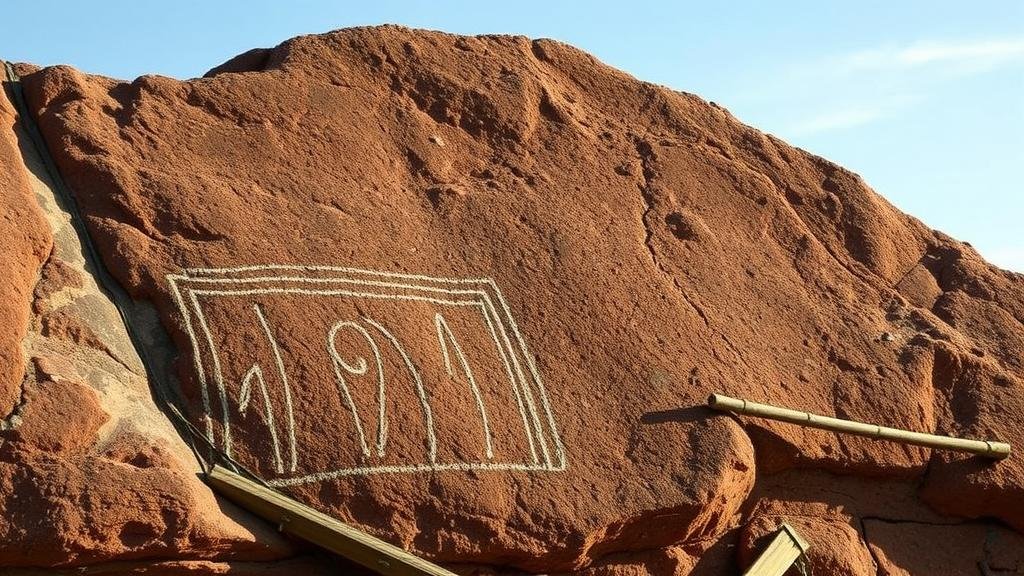The science behind decoding petroglyphs and other ancient markings.
The Science Behind Decoding Petroglyphs and Other Ancient Markings
Petroglyphs, the ancient carvings found in rocks across the globe, offer a fascinating glimpse into the lives and cultures of our ancestors. These symbols, created by pecking, carving, or abrading stone surfaces, serve as windows into historical narratives, beliefs, and interactions of early humans. This article delves into the scientific methodologies employed in decoding these enigmatic markings and the insights they provide into prehistoric life.
The Importance of Petroglyphs
Petroglyphs are not merely artistic expressions; they are vital for anthropological and archaeological studies. Found in regions like the American Southwest, with notable sites like the Petroglyph National Monument in New Mexico (established in 1990), these carvings can date back thousands of years, some potentially as far back as 30,000 BCE. They provide context for understanding social structures, spiritual beliefs, and environmental interactions of ancient societies.
Decoding petroglyphs involves a multidisciplinary approach, utilizing techniques from archaeology, anthropology, linguistics, and even geology. Here are the primary methodologies used:
- Field Surveys: Archaeologists conduct extensive field surveys to locate and document petroglyph sites. For example, in the Great Basin region of the United States, researchers have recorded thousands of petroglyphs.
- Photogrammetry: This technique employs high-resolution photography to create 3D models of petroglyphs. Such models help in analyzing depth and dimension, which can indicate tools used and the carving technique.
- Geochemical Analysis: By analyzing the mineral content of the rocks, scientists can identify the age and the environmental conditions at the time the petroglyphs were created. This includes techniques like thermoluminescence dating.
Interpreting Symbols and Meaning
Understanding the meanings behind petroglyphs is a complex endeavor. Scholars employ a variety of approaches to interpret these symbols:
- Cultural Context: The meaning of a petroglyph can vary significantly based on its cultural origin. For example, Native American petroglyphs frequently depict animals like deer or bison, indicative of the tribes reliance on these animals for survival.
- Comparative Analysis: Researchers compare inscriptions across different cultures to find similar symbols that may imply shared beliefs or interactions. A notable example is the similarity between Polynesian and Native American markings, suggesting cross-cultural exchanges.
- Consultations with Indigenous Groups: Engaging with local tribes has proven invaluable. Many tribes possess oral histories that provide insights into the meaning of specific petroglyphs and their cultural importance.
Case Studies: Notable Sites
Several locations around the world are renowned for their petroglyphs, each telling unique stories:
- Bhimbetka Rock Shelters, India: Discovered in the 1950s, these shelters feature hundreds of rock paintings and petroglyphs approximately 30,000 years old, depicting animals, human figures, and scenes of daily life.
- Seychelles Petroglyphs: Located on the island of La Digue, these carvings reflect cultural practices of the early settlers, including depictions of ritualistic practices and daily activities.
- Northwest Coast of North America: The Indigenous peoples of this region left behind intricate petroglyphs often celebrating spiritual beliefs and significant events, which continue to hold cultural significance.
Challenges in Decoding Petroglyphs
While the science of decoding petroglyphs has advanced, several challenges remain:
- Erosion and Weathering: Many petroglyphs are at risk due to natural erosion, pollution, and human activities, making preservation efforts critical.
- Loss of Cultural Knowledge: With the passing of generations, the meanings and stories associated with some petroglyphs may be lost, further complicating interpretations.
- Technological Limitations: Current methods, while powerful, may not fully capture the intricate details or nuances of ancient markings.
Conclusion
Decoding petroglyphs and other ancient markings is a dynamic field, constantly evolving with new technologies and methodologies. As researchers continue to uncover the stories behind these ancient symbols, they not only shed light on human history but also help preserve cultural heritage for future generations. By integrating modern science and traditional knowledge, we can further enrich our understanding of the monumental achievements of our ancestors, ensuring that their voices are remembered in our shared narrative.
For anyone interested in archaeological exploration, visiting petroglyph sites and engaging with local indigenous cultures can provide profound insights into humanity’s past. Preservation efforts and education about these precious resources are essential to protect these historical treasures for future studies and appreciation.



